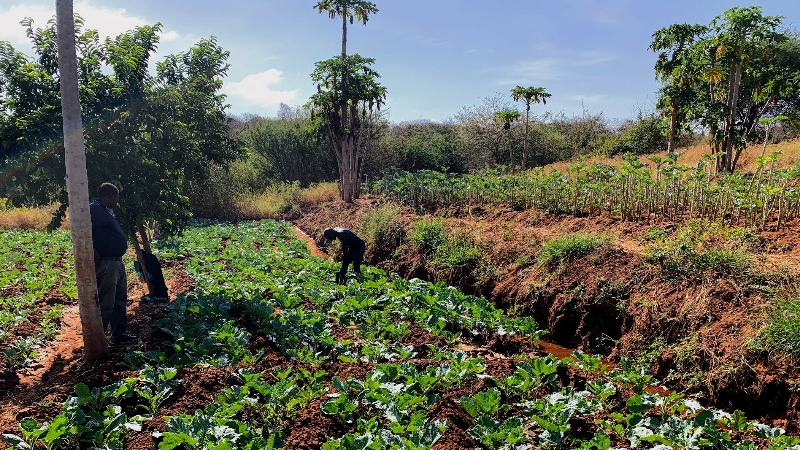How sand dams provide year-round access to water

We enjoy hearing about the great work The Water Project is doing to help communities in sub-Saharan Africa to access safe, clean water. This month we learnt how sand dams provide a reliable source of water for communities living in remote, rural areas.
The Water Project provides funding and organisational support to the African Sand Dam Foundation (ASDF), a pioneer in sand dam construction in Central Kenya. They support sand dam construction, hygiene training, farmland terracing, seed distribution and shallow well development.
Sand dams are a low-cost, low maintenance, but high impact way of providing year-round access to water for communities in dryland environments. Unlike traditional dams that hold back water, sand dams allow much of the water to flow downstream. Sand dams are not a new technology. In fact, some of the dams in Eastern Kenya are 50 years old.
“When the rains come, water rushing down the riverbed carries sand, dirt, and rocks as it rushes downstream. The sand dams are built low so almost all of the water passes by, but the sand builds up behind the wall. That sand can extend up to 1.5 km beyond the dam, holding water for people to access. It may take a few rainy seasons for the dams to fill with sand, but once they do they have the potential to provide year-round access to water for people living nearby.”
According to The Water Project as much as 35% of the sand and debris behind the dam is water. “Sand dams provide a lifetime of local, clean and reliable water within 30-90 minutes of people’s homes; improving access to water for people, crops and livestock in water stressed environments. The significant reduction in the time required to collect water affords the opportunity and energy to invest in sustainable farming activities, such as terracing and tree planting.”
Sand dams are life changing, say The Water Project. A 2008 study found that the sand dams they observed not only reduced vulnerability in the region but increased the average income of farmers using the dams by $120.
With a reliable source of water communities are able to improve farming techniques and provide a secure and diverse supply of food. “When families can produce food and generate an income, they are able to afford education for their children. With ready access to water, children don’t have to spend their time collecting water, are less likely to suffer acute health impacts of diarrhoea and water-borne disease and realise their potential for a future outside of poverty.”
Find out how a sand dam transformed David’s fields from barren land into irrigated crops: https://medium.com/the-water-project/an-oasis-in-the-desert-the-transformative-power-of-sand-dams-14fedfd9865b
Read more about sand dams and how to support The Water Project: https://thewaterproject.org/sand-dams
